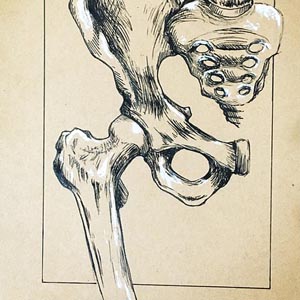 Smart Citations
Smart CitationsSee how this article has been cited at scite.ai
scite shows how a scientific paper has been cited by providing the context of the citation, a classification describing whether it supports, mentions, or contrasts the cited claim, and a label indicating in which section the citation was made.
Effect of dexmedetomidine and fentanyl on hemodynamic changes and block profile following spinal anesthesia with ropivacaine among patients with femoral fractures undergoing lower limb surgery
The aim of this study was to compare the effect of dexmedetomidine and fentanyl on hemodynamic changes and block characteristics following spinal anesthesia with ropivacaine among patients with femoral fractures undergoing lower limb surgery. In this double-blind clinical trial, 64 patients who were candidates for lower limb surgery. Patients were divided into two groups based on the block pattern. In the first group, dexmedetomidine was prescribed. In the second group, fentanyl with ropivacaine was prescribed. Sensory and motor blocks at or above the T8 dermatome in each group were measured. Furthermore, the sensory block was evaluated every 1 minute after anesthesia with a needle (pin prick method) and also the motor block was evaluated every 5 minutes by the bromage scale. There was a statistically significant difference between the two groups in terms of the time for achieving sensory block to T8 or higher dermatome (p = 0.0001). The time elapsed until the onset of motor block was shorter in the dexmedetomidine group, and dexmedetomidine had a shorter time for achieving sensory block to T8 or higher dermatome than fentanyl. A statistically significant difference was found in terms of the time elapsed until the motor block and the time for achieving sensory block to the T8 dermatome or higher (p <0.05). The time elapsed until the onset of motor block was shorter in the dexmedetomidine group, and dexmedetomidine had a shorter time for achieving sensory block to T8 or higher dermatome than fentanyl. Our findings revealed a statistically significant difference in terms of the duration of sensory block for reaching the T12 to L1 dermatome and the duration of obtaining bromide scores 0 and 1 (p = 0.0001). The time for achieving sensory block to dermatome T12 to L1 and the time of obtaining bromage scales of 0 and 1 were longer in dexmedetomidine group (p = 0.0001). Pain in dexmedetomidine group was less than fentanyl group in 2 to 8 hours after surgery (p <0.05). The duration of analgesia was longer in the dexmedetomidine group (p = 0.001). In summary, it can be suggested that adding dexmedetomidine to the anesthetic ropivacaine may be beneficial.
How to Cite

This work is licensed under a Creative Commons Attribution-NonCommercial 4.0 International License.
PAGEPress has chosen to apply the Creative Commons Attribution NonCommercial 4.0 International License (CC BY-NC 4.0) to all manuscripts to be published.

 https://doi.org/10.4081/ejtm.2023.10610
https://doi.org/10.4081/ejtm.2023.10610





